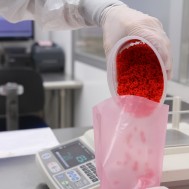Synthetic rubber and natural rubber share numerous desirable qualities, yet important distinctions lie between the two. Depending on the polymer selected, synthetic rubber is comparatively easier to produce and exhibits greater resistance to abrasion, grease, oil, and heat compared to its natural counterpart. While both types of rubber are highly flexible, synthetic rubber maintains its flexibility even at low temperatures. Moreover, with appropriate manufacturing methods, synthetic rubber can be engineered to withstand extreme temperatures and corrosion, rendering it an invaluable component in numerous products.
Origins of Synthetic Rubber
Synthetic rubber derives from catalyzing monomers obtained from cracked hydrocarbons, which are subsequently polymerized to form long chains. Various synthetic polymers are created through the addition of compounds such as butadiene, styrene, isoprene, chloroprene, acrylonitrile, fluorine, ethylene, and propylene. These polymers, combined with fillers, protectants, plasticizers, curatives, and other chemicals, produce rubber compounds with specific physical and chemical properties.
Silicone Rubber: A Specialized Synthetic Elastomer
Silicone rubber, another synthetic elastomer, is composed of silicone polymers. Silicone is synthesized through the polymerization of silicon extracted from sand or quartz. Unlike many synthetic polymers with a carbon-carbon backbone, silicone comprises silicon-oxygen bonds, endowing it with high-temperature performance. Widely used across industries, silicone rubbers come in various formulations, often as one- or two-part polymers, and may incorporate fillers to enhance properties or reduce costs. Silicone rubber is typically non-reactive, stable, and resistant to extreme environments and temperatures.
Historical Perspective
The surge in demand for synthetic rubber, often credited to World War II, actually finds its roots in the late 19th century. The necessity for pneumatic bicycle tires in the 1890s spurred the development of synthetic rubber, with the first synthetic polymerization occurring in 1909 by a team of German scientists led by Fritz Hoffman.
During the 1930s, significant progress led to the creation of neoprene, among the earliest successful rubber synthetics, and the introduction of Buna rubbers.
Impact of World War II
The outbreak of World War II severed U.S. access to 90 percent of the world’s natural rubber supply, prompting a strategic response. President Franklin D. Roosevelt established the Rubber Reserve Company (RRC) in June 1940 to mitigate the nation’s vulnerability. In December 1941, major rubber companies signed agreements to produce general-purpose synthetic rubber, leading to significant industrial-scale production by 1942.
Contemporary Applications
Today, synthetic rubber dominates the rubber product market, constituting over 58% of rubber products as of 2005. Silicone rubber, in particular, finds extensive application across a myriad of consumer and industrial products. Its heat resistance and food safety make it popular in cooking and baking tools, sportswear, storage containers, electronics, cosmetics, and footwear. Additionally, synthetic rubber is vital in automotive products, sealants, insulators, and medical equipment such as tubing and syringe components.
For further insights into rubber, whether synthetic or natural, or for sourcing rubber products, consider reaching out to the engineers at Apple Rubber.
